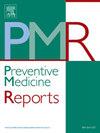The burden and trends of road injuries in Afghanistan (1990–2021): A joinpoint analysis of data from the global burden of diseases, 2021 study
IF 2.4
3区 医学
Q2 PUBLIC, ENVIRONMENTAL & OCCUPATIONAL HEALTH
引用次数: 0
Abstract
Objective
Road injuries pose a major public health challenge, particularly in low-income, conflict-affected regions like Afghanistan. Despite issues like poor infrastructure and weak traffic regulations, no national study has assessed the road injury burden. This study examines Afghanistan's road injury burden from 1990 to 2021.
Method
This epidemiological study utilized the global burden of diseases (GBD) 2021 data. Key metrics included age-standardized mortality rate (ASMR), age-standardized disability-adjusted life-years rate (ASDR), years of life lost (YLL), and years lived with disability (YLD) per 100,000 population. Trends were analyzed using joinpoint analysis to determine annual and average annual percent changes (APC and AAPC). Estimates were presented with a 95 % uncertainty Interval, and statistical significance was assessed via permutation tests (p < 0.05).
Results
Between 1990 and 2021, Afghanistan's road injury burden declined across all indicators (ASMR: -1.2 %, ASDR, YLL, YLD). Males (1.2 %) and children (AAPC: −3.1 %) saw the steepest declines, while the elderly (−0.7 %) had the slowest. Motor vehicle injuries dropped most (1.3 %), followed by pedestrian (1.0 %) and motorcyclist (0.9 %) injuries.
Period-specific trends showed fluctuations: ASMR, ASDR, and YLL rose (1990–1997), then declined, except YLD, which increased post-2018 (+0.5 %). From 2017 to 2021, YLD rose across all age groups (except 0–14 years). Post-2014, motorcycle-related ASMR increased (+0.3 % APC), while from 2017 to 2021, ASDR and YLD increased across all injury types (+0.4 % to +1.3 % APC).
Conclusion
Despite progress, rising DALYs and YLDs, especially from 2017 onward, highlight a growing disability road injury burden, necessitating targeted interventions to address long-term disability and mitigate its public health impact.
求助全文
约1分钟内获得全文
求助全文
来源期刊

Preventive Medicine Reports
Medicine-Public Health, Environmental and Occupational Health
CiteScore
3.90
自引率
0.00%
发文量
353
 求助内容:
求助内容: 应助结果提醒方式:
应助结果提醒方式:


